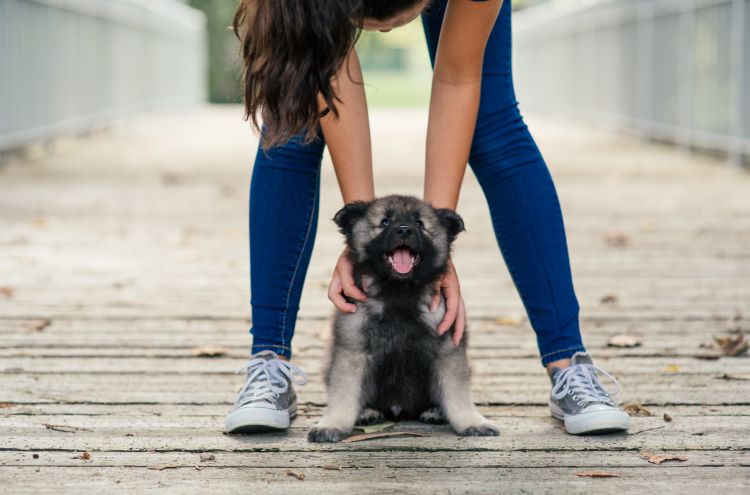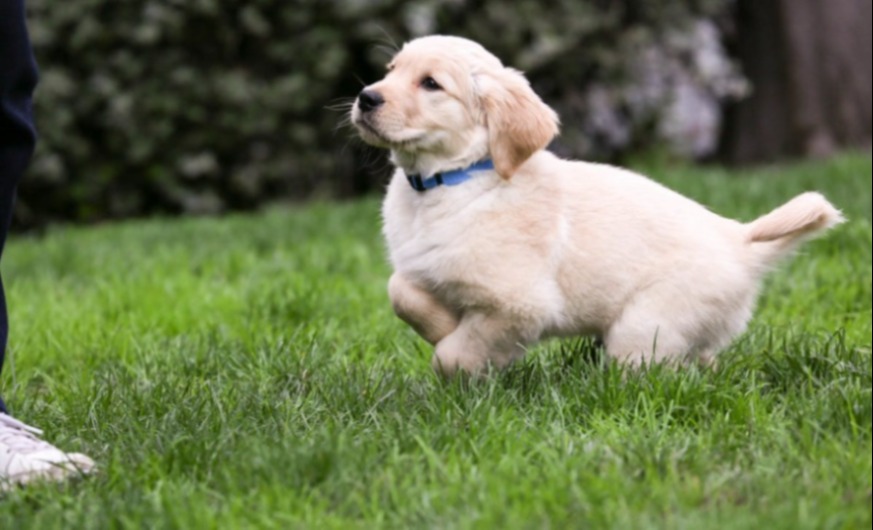Ready to help treat your pet to a healthy life?
Tips for Choosing a Puppy Class
By : Sam Chambers | Published Mar 19, 2024

There’s nothing more exciting than bringing home a new puppy. During their first year of life, puppies are highly impressionable and go through a variety of changes in both their appearance and personality. Much like human children, they need help growing into confident, well-behaved members of the family — they’ll need some well-structured training along the way to do this.
One of the best ways to help nurture a new puppy is by attending puppy classes. They not only provide basic training and obedience, but they also greatly aid in early socialization, which can help prevent behavioral problems down the road.
But not all puppy classes are the same or created equal, so choosing a puppy class that’s the right fit is critical.
Types of puppy classes
Most puppy classes tend to be categorized as either obedience classes, socialization classes, or a mixture of both. But how do you know which one is right for you?
Socialization classes
Puppies are like sponges, constantly absorbing new information through everyday life. Without new and positive experiences to learn from, puppies are less likely to grow into well-adjusted, confident companions. Inadequate early socialization can also hamper their quality of life (and yours!), leading to unwanted behaviors like fear, anxiety, and aggression.
To help support this critical period, socialization classes focus on exposing your puppy to new people, sights, sounds, smells, animals, and environments in a safe and controlled group setting. During class, instructors help encourage appropriate play between puppies and teach owners about puppy behavior and body language.
The earlier you can start socialization classes, the better. The American Veterinary Society of Animal Behavior recommends that puppies start classes around 7-8 weeks of age before they’re fully vaccinated. Schedules for socialization classes vary, but they typically take place once or twice a week and last until puppies are 16-20 weeks old.
Obedience classes
While old dogs can certainly learn new tricks, puppies are significantly easier to train because they learn quickly and aren’t as set in their ways. During puppyhood, you can teach them the right way to behave from the start, instead of having to correct any bad or negative habits later on.
Puppy obedience classes teach basic commands like sit, down, stay, and come, but they also help foster the bond and trust between you and your puppy. Besides curbing undesirable puppy problems like jumping, chewing, and biting, basic obedience also helps keep your pup safe. Sit and stay commands, for example, can help prevent your dog from running into a dangerous situation.
Obedience classes aren’t just for puppies, though! You, as the pet parent, will also learn how to effectively train and communicate with your puppy. Most obedience classes are taught in a group setting with a limited number of puppies, but private obedience classes may also be available to you. Puppies can start taking obedience classes as early as 7-8 weeks of age until they’re about 20-24 weeks old, with most programs lasting 4-6 weeks.

8 tips for choosing a puppy class
Choosing a puppy class is an important step in setting your puppy up for a lifetime of success. By following these tips, you can choose a puppy class that meets your puppy's needs and helps them become a well-behaved and socialized adult dog.
1. Find a certified class instructor
Choose a puppy class taught by a professionally certified dog trainer, ideally one who’s completed a certification course and/or is part of a professional dog training organization. As an extra consideration, look for a trainer who’s willing to invest in their own professional development. This ensures that your pup is exposed to safe, professional, and effective training techniques.
In addition to understanding what their certification means, it’s also important to find an instructor who’s approachable! A good class instructor will be happy to answer any questions you might have and create a safe, supportive environment for both you and your pup.
2. Research the class curriculum
In the world of dog training, there isn’t necessarily a “one size fits all” approach. In fact, there are many different training methods and ways of thinking when it comes to dog training -and socialization — some of which are quite conflicting.
To help navigate the confusion, research the instructor’s training philosophy. Make sure they use positive reinforcement techniques and force-free methods. Aversive training methods cause significant stress and can harm your puppy’s overall well-being as well as their bond with you.
3. Check the class size and environment
Choose a puppy class with limited space so the instructor can provide individual, one-on-one attention. One trainer to 6 puppies is the ideal ratio for most puppy classes. Too many puppies in one room can quickly become very noisy, distracting, and overwhelming. If you or pup can’t concentrate on what the instructor is saying or doing, you won’t find the class very effective or productive. Above all, the class should be a calm environment!
4. Read reviews and ask for recommendations
At the start of your search, it’s always a smart idea to ask for recommendations from your veterinarian, friends, and other dog owners. This can significantly narrow down your search and help you choose a trustworthy puppy class.
Reading online reviews is also a good way to get an idea of how previous students felt about the class or instructor. To make sure the reviews aren’t biased, look for ones on sites like Google or Yelp.
5. Ask about safety protocols
Puppies can start taking classes before they’re fully vaccinated, but in order to keep everyone healthy, strict safety protocols are critical. Classes should follow precautions such as:
- Making sure all puppies are healthy and in the same age group. Puppies should also receive a clean bill of health from their veterinarian before enrolling.
- Requiring all puppies to avoid dog parks, dogs of unknown vaccination status, and areas where unvaccinated dogs may go to the bathroom.
- Disinfecting and sterilizing the training facility between each class.
- Requiring all puppies to continue and complete their vaccination schedule. Proof of vaccinations should also be provided.
6. Visit a class before enrolling
If possible, visit a class session before enrolling to observe the instructor and how they interact with the puppies. Seeing an instructor in action will help you get a feel for both their training and teaching style.
Most instructors will have no problem with letting you observe a class and may even offer the first session for free. This can help you get a feel for the class and determine if it's the right fit for your puppy. Plus, it’ll give you the opportunity to check out the class venue to make sure it’s safe, clean, and calm.
Some good questions to consider while observing the class include:
- Is the instructor willing to answer questions from students?
- Do the puppies look relaxed and happy, or do they look anxious or stressed?
- Do the instructor’s training techniques seem effective?
- Is there a good working relationship between the instructor and the students?
- Is the class environment clean?
7. Compare costs
As it goes with most things, the cheapest class may not be your best option. If a class is much cheaper than other options, do some digging. The instructor might not be professionally certified, or the class venue isn’t suitable for running a puppy class, such as an open playing field. This could put your puppy in harm’s way, as puppies can get sick from areas where unvaccinated dogs go to the bathroom. These areas also can’t be cleaned or sterilized as thoroughly as an indoor facility.
8. Consider your puppy’s individual needs
Every puppy is unique, so consider your puppy's personality, energy level, and temperament when choosing a class. For instance, some puppies are naturally more nervous and might respond better to private classes until they feel confident enough to take a group class.
Understanding your puppy's specific traits and tendencies can help you choose a puppy class that will cater to their needs and set them up for success.

Protect your puppy’s health before starting classes
Before enrolling your puppy in their first class, make sure they’re protected. Pet insurance can help cover the cost of veterinary care in case your puppy gets unexpectedly injured or sick — both in and outside the classroom.
Along with early socialization, proper training, and lots of love and patience, your puppy will be well on their way to becoming a happy and confident dog.
